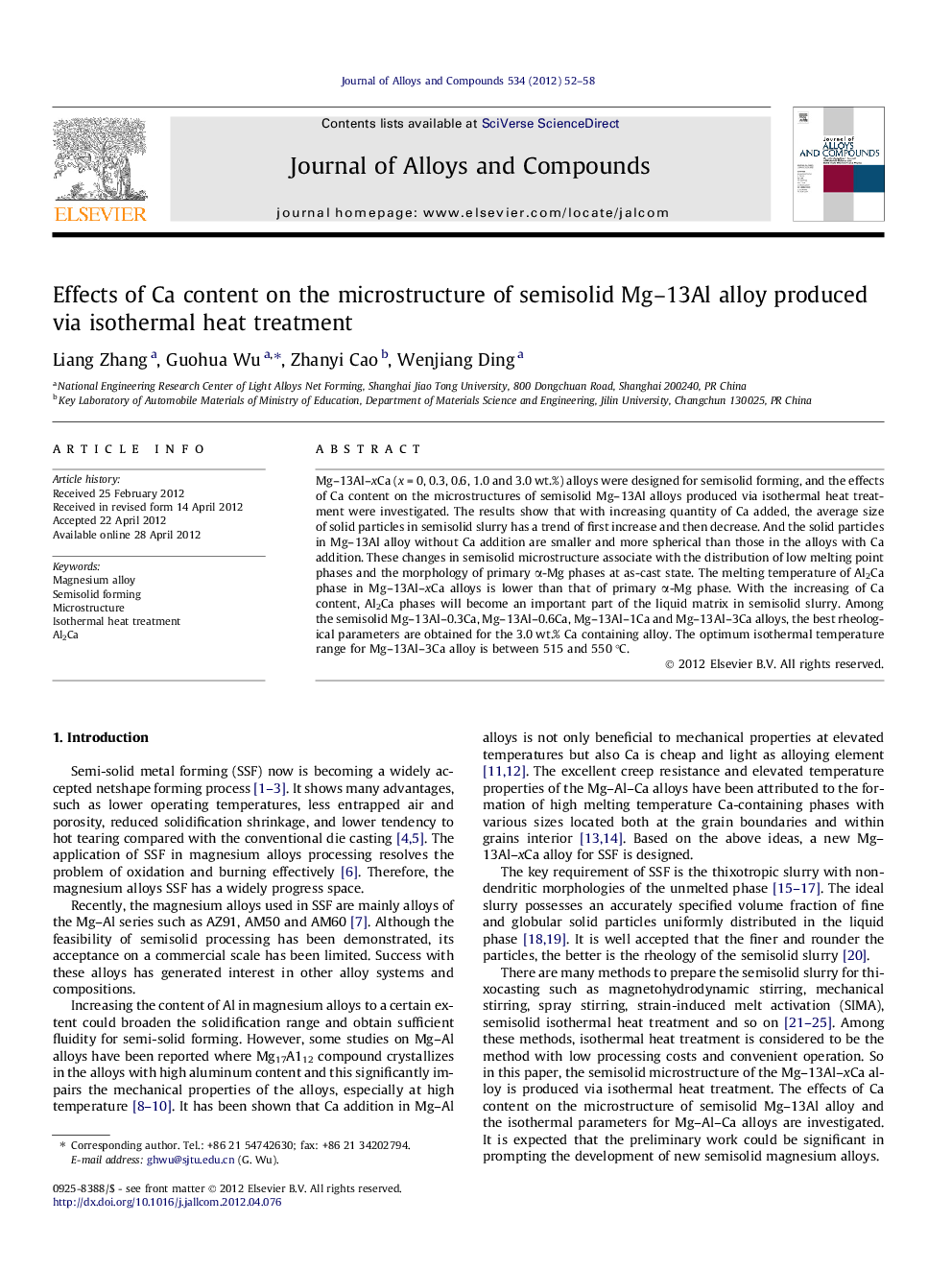| Article ID | Journal | Published Year | Pages | File Type |
|---|---|---|---|---|
| 1615600 | Journal of Alloys and Compounds | 2012 | 7 Pages |
Mg–13Al–xCa (x = 0, 0.3, 0.6, 1.0 and 3.0 wt.%) alloys were designed for semisolid forming, and the effects of Ca content on the microstructures of semisolid Mg–13Al alloys produced via isothermal heat treatment were investigated. The results show that with increasing quantity of Ca added, the average size of solid particles in semisolid slurry has a trend of first increase and then decrease. And the solid particles in Mg–13Al alloy without Ca addition are smaller and more spherical than those in the alloys with Ca addition. These changes in semisolid microstructure associate with the distribution of low melting point phases and the morphology of primary α-Mg phases at as-cast state. The melting temperature of Al2Ca phase in Mg–13Al–xCa alloys is lower than that of primary α-Mg phase. With the increasing of Ca content, Al2Ca phases will become an important part of the liquid matrix in semisolid slurry. Among the semisolid Mg–13Al–0.3Ca, Mg–13Al–0.6Ca, Mg–13Al–1Ca and Mg–13Al–3Ca alloys, the best rheological parameters are obtained for the 3.0 wt.% Ca containing alloy. The optimum isothermal temperature range for Mg–13Al–3Ca alloy is between 515 and 550 °C.
► Al2Ca phase becomes an important part of the liquid matrix with Ca addition. ► The isothermal temperature range for Mg–13Al–3Ca alloy is between 515 and 550 °C. ► The as-cast microstructures greatly influence the semisolid microstructures.
